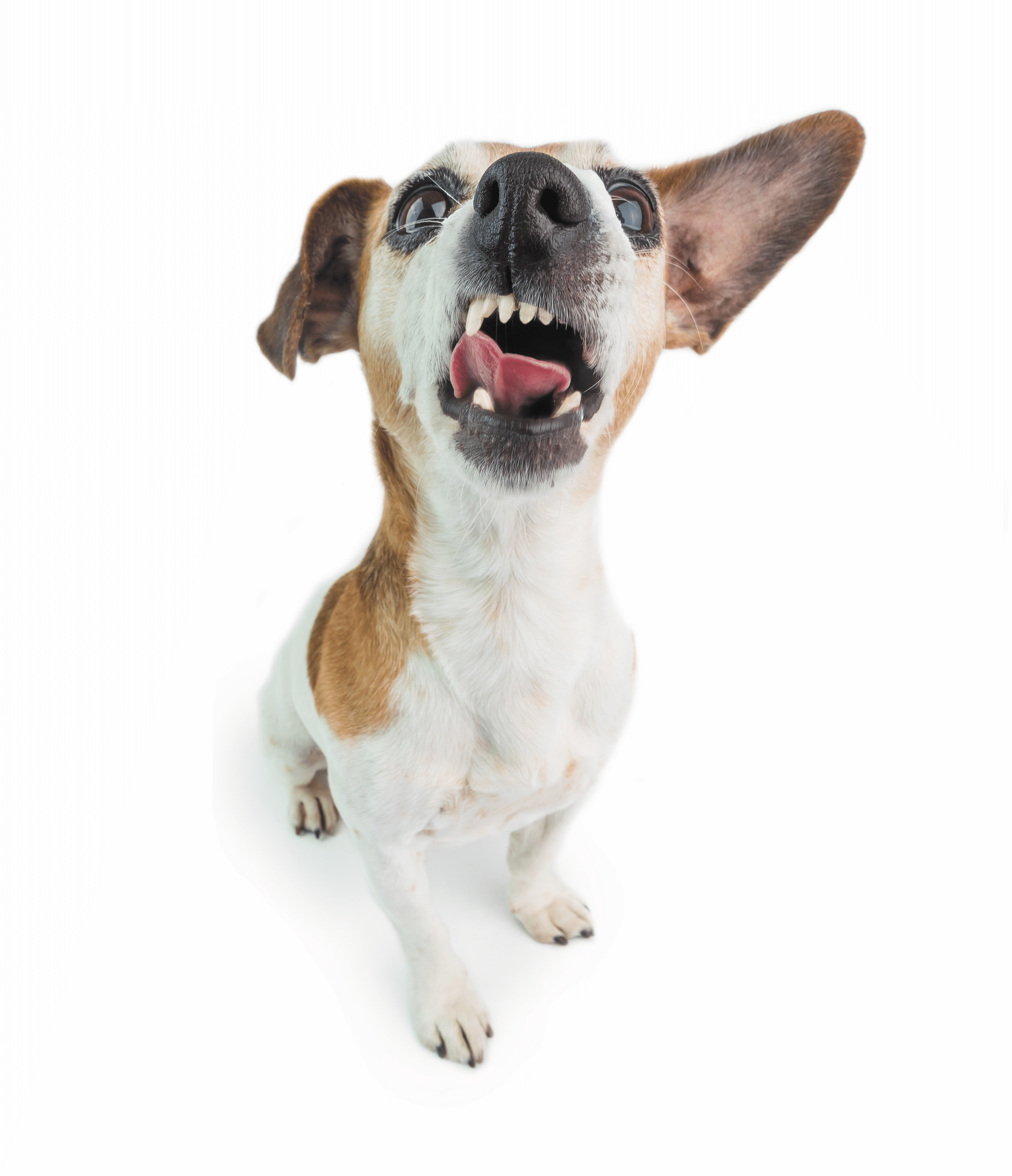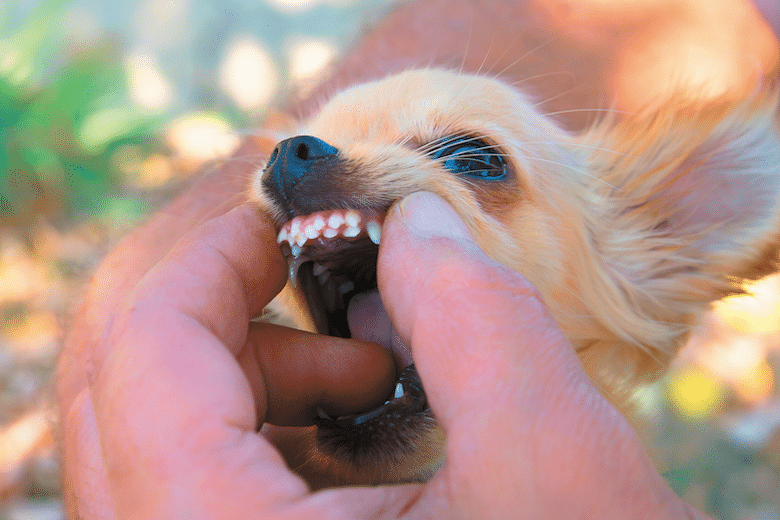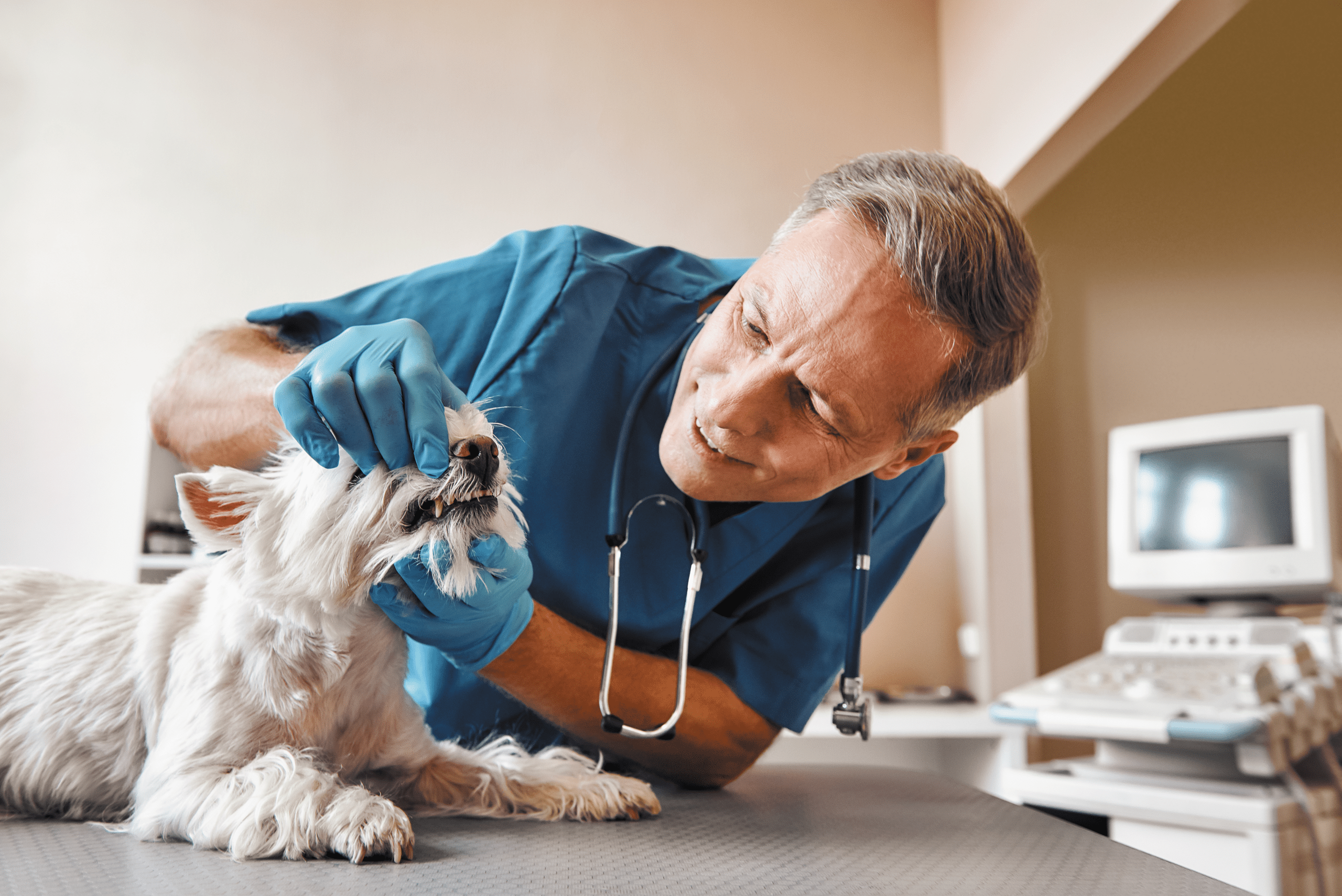So that’s why we named him Jaws.” Staring up at me was a 1-year-old, neutered Bichon whose name required no explanation. A row of meandering incisors framed by two oversized canines jutted from his chin, giving Jaws a decidedly alpha-dog appearance with a hint of defiance. It also made him irresistibly cute.
“I just don’t understand why he won’t eat anymore. He used to gobble everything and now he barely picks his kibble.”

The underbite
Boxers, Bulldogs, Shih Tzus and Lhasa Apsos were “designed” to have an underbite, however misguided that was. These breeds have adapted over generations to make the most of this malocclusion, but other dogs with an underbite, including Jaws, will often experience severe problems. As I began my examination, I noted that Jaws flinched each time I touched his lower jaw. Mandibular pain is common in these patients due to the upper incisors (the smaller middle teeth) digging into the teeth and gums below. My initial impression was that poor little Jaws wasn’t eating due to pain.
“But he never cries or whimpers. I can’t stand the thought of him hurting! What can we do?”
The first step was to take a complete set of oral radiographs. This would require brief anesthesia, so we’d need to do some blood tests prior to the procedure. Once we had a better understanding of what was happening beneath the gums, we would consult with a veterinary dental specialist to determine the best treatment to make Jawsy (yes, I said that) more comfortable for the rest of his long life. We got to work.

Fixing the problem
Jawsy’s dental X-rays revealed the problem was bone deep. The upper canines had failed to completely erupt and were being pushed backward due to the overlapping lower teeth. Several teeth in the mandible were being forced into odd angles, likely causing additional jaw pain. After consulting a veterinary dentist, we decided to refer Jaws for the extraction of several teeth and orthodontics. Doggie braces should only be used in dogs not used for breeding. Because Jaws was neutered, he wouldn’t perpetuate this genetic malady to future pups. While the initial estimate for his care was more than his owner had planned for, she realized she was saving Jaws from a lifetime of pain and suffering.
I saw Jaws two weeks later. He bounded in to see me, beaming his braces as he pranced through the lobby.
“I can tell he’s feeling much better! We’re still feeding him wet food, but his whole attitude has brightened!”
It would take another six to 12 months before Jaws’ bite would fully heal. His smile might not be
“Hollywood perfect,” but he’d be able to nosh comfortably for the rest of his life.
Don’t ignore teeth problems
If your dog has any oral abnormality, have your veterinarian check it out. Too often dog owners forget that bite abnormalities, crooked teeth and even “bad breath” are often accompanied by chronic pain. Just because a snaggletooth pup doesn’t cry and wolfs down his food doesn’t mean he doesn’t hurt. Advances in veterinary dentistry now allow dog owners to provide better care than ever. And Jaws has a new nickname these days: Smiley

Must-have dental work
The majority of dogs with an underbite or overbite will need some form of dental intervention. If your dog has an underbite or overbite, know that:
- Extraction of the teeth interfering with the bite is the most common treatment, followed by orthodontics or “braces.”
- Teeth permanently exposed to air may become discolored and have damage to enamel,
resulting in discomfort. - Daily brushing is incredibly important in any dog with exposed teeth, crowded mouth or malocclusion.






